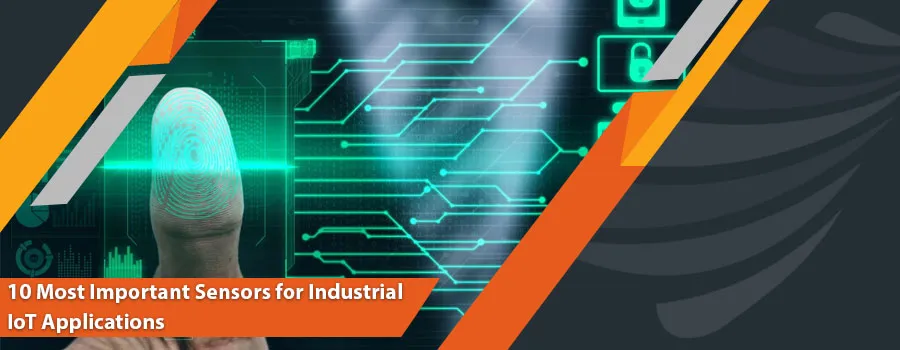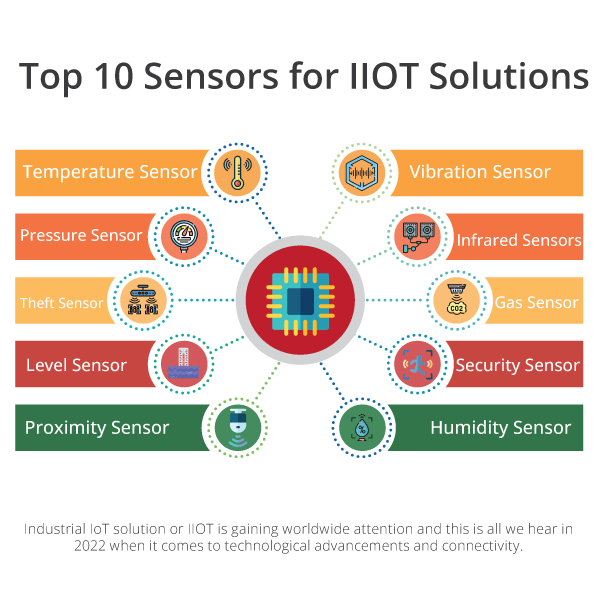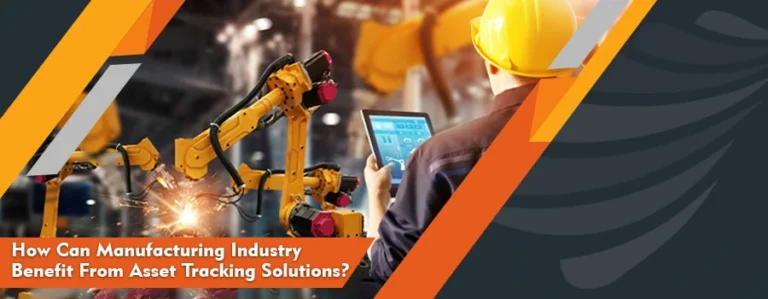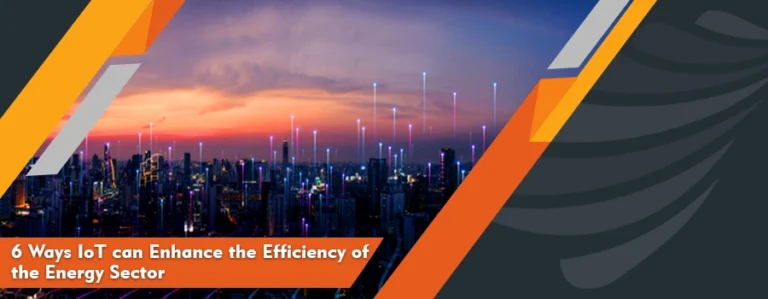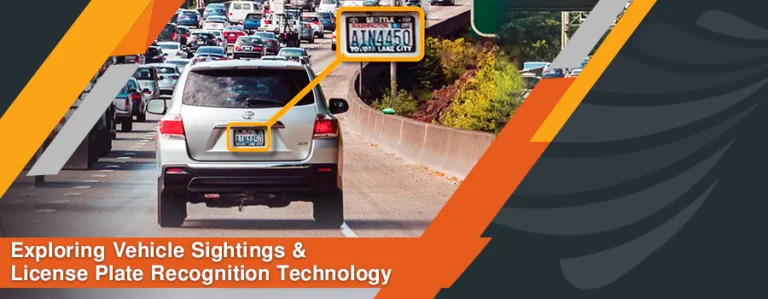Industrial IoT solution or IIOT is gaining worldwide attention and this is all we hear in 2022 when it comes to technological advancements and connectivity. With mere human interaction, the smart connectivity of IoT is enabling the sensors to send real-time data over virtual dashboards. Industries of almost all the domains are using sensors, however, the connectivity aspects offered by IoT have evolved the use of sensors while enhancing some promising features that can solve any traditional problem of industries.
Rapid improvements have been observed in sensor technology, which makes it difficult to identify the latest innovations in the field as hundreds of sensors have limitless use cases and applications. So, in this article, the top 10 sensors commonly used in IIOT applications have been listed along with their features.
However, before proceeding with the list of sensors, let’s discuss industrial IoT solutions and how IIoT sensors are different from IoT sensors.
Industrial IoT Solutions
In the IIOT solutions, the sensors have the strong ability to collect the data from the machine and transfer it to the operating staff in real-time. IIoT sensors are utilized for a variety of purposes, for instance, monitoring industrial systems, capital and equipment that helps the operators in making data-driven decisions and improve the overall performance of operations.
The real-time and accurate data gathered by the sensors is analyzed and transferred to the centralized system the company holds. From that useful insight, the management of the industries can make an informed decision about their future asset needs, risks and priorities.
As far as the difference between the IoT and IIoT sensors are concerned then it can be observed that the IoT sensor or device is a vast category and IIoT sensors fall under this category, however, the meticulous standard of such sensors make them different and highly valuable as compared to other IIoT sensors.
Top 10 Sensors for IIOT Solutions
It has been mentioned previously that several IIoT sensors are available in the market for different applications. Some sensors among them have general-purpose, however, some sensors are availed as per the particular requirement of the industrial application.
The list of the 10 most commonly used IIOT sensors that you should be aware of is provided below.
1. Temperature Sensor
The temperature sensor ensures that the resources in the industries are kept within a safe temperature range. This sensor prevents heavy machinery from overheating, especially the boilers. A few years back, temperature sensors were only used to monitor and regulate the temperatures of refrigerators, A/C control, and other devices used for effective environmental controls. However, with the advancement in technology and the advent of the IoT world, temperature sensors penetrated the health, food, agriculture and manufacturing industries. For instance, in the food industry, it is required to keep the food at an appropriate temperature so that the product remains safe. From maintaining a cold chain to preventing equipment from overheating, all is done with the help of temperature sensors.
2. Vibration Sensor
Vibration sensors used in the industries are specifically designed to read the vibration data and send it to the server for analysis. Abnormal vibration is a sign of machine failure. The vibration sensor continuously monitors the vibration levels of industrial resources and detect abnormal vibration pattern. Mostly, this sensor pinpoints the potential failures in machines or incorrect use of the industrial equipment by sensing their vibration.
3. Proximity Sensor
As the name suggests, proximity sensors are used for the contactless detection of the objects in the proximity of the sensor. The proximity sensor emits infrared radiations or electromagnetic waves. This sensor has some interesting features for industrial applications. For instance, in the retail industry, the sensor can easily detect the customers’ motion along with the products they need. With the help of the proximity sensor, the customer is immediately notified regarding the special offers and discounts on the products they are in search of. Proximity sensors have their effective use cases in airports, malls and stadiums. This sensor also serves its purpose in the manufacturing lines of industries.
4. Gas Sensor
In industries, the probability of harmful gas leakage and smoke is high which can impact the productivity of the workers or can lead to an unfortunate event. However, with the help of the IIoT gas sensor, the management of the industries can easily detect the gas leakage and smoke in an area so that safety precautions can be implemented as soon as possible. This sensor helps in ensuring the health and safety of the employees in industries.
5. Humidity Sensor
Managing and monitoring the humidity levels in the industries are the most important aspects. As per the sensitivity of the nearby equipment, the facility managers can check the humidity levels in the surrounding area. For such sensors accepted levels of humidity can also be set. The system immediately generates an alert when the humidity level in a specific area of the industry goes beyond the range.
6. Security Sensor
Apart from enabling industrial automation, making the industries and their procedures secure is another goal of IIoT solutions. With the advent of different IIoT sensors, companies can make the premises secure. In this regard, a security sensor is found to provide the most viable solution. These sensors can be positioned easily near doors and windows of the industry for detecting motion in different areas. The sensor detects unwanted visitors and suspicious motions on the premises which can immediately alert the managers to maintain high-security standards on the premises.
7. Level Sensor
For monitoring the level of fluid or chemical in particular equipment, the level IIoT sensor is used. The available level of fluid in equipment directly impacts the performance of the machine. This is because the low fluid level can threaten the resource performance, while, the high fluid level can result in wastage. This indicates that monitoring appropriate fluid levels in different industrial equipment is important. In this regard, a level sensor can help the operators to track the fluid level and if the level is below or above the threshold then the system immediately generates an alert and let the operators maintain the required level. Apart from the fluids, level sensors are also viable for sensing the level of powder and other materials used in the industry.
8. Pressure Sensor
In the IIoT solutions, the changes in the pressure of gases and liquids are identified with the help of a pressure sensor. Hence, whenever a change in the pressure of the substance is observed then the pressure sensor connected to the IoT network generates a real-time alert. The most common application of the pressure sensor in the industry is leakage testing. The inability of the industries to conduct leakage testing can result in severe effects.
9. Infrared Sensors
Infrared sensors are specifically designed to monitor the environment, either by detecting the radiation or emitting the radiation. For instance, the heat emitted by the resources can easily be detected by an infrared sensor. An infrared sensor has several applications as the sensor can also detect the objects in front. Apart from it, the sensor can also identify the heat if it is emitted from any of the resources. An infrared sensor is also beneficial for the healthcare industry as it can also sense blood pressure and blood flow.
10. Theft Sensor
The major use of theft sensors is in the retail industry. Currently, the theft sensor is fixed with the valuable items to prevent them from getting stolen or the expensive tools and assets to stay in the acceptable location. Apart from the retail industry, theft sensors are widely being utilized by the manufacturing and construction industries. The sensor is fixed with the machinery and other important equipment which help in keeping them safe and limits them from going out of industrial premises.
Conclusion
Having the knowledge about the wide range of IIoT sensors along with their functionalities can help the industries in analyzing their procedures and then integrate the most useful sensor as per their requirements. IoT has changed the way humans live and industries work, and in this regard, the sensor companies are revolutionizing and innovating at a faster pace to enable industries in automating procedures. Furthermore, oil and gas, fleet management, manufacturing, healthcare and agriculture are the most important industries that can significantly benefit from IIoT sensors.

